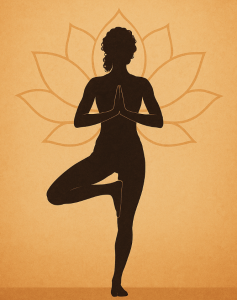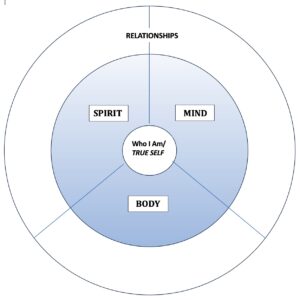This is my last week for sharing some of the substance from my soon-to-be-published book, Creating Space: The Practice of Transformation, Vol. 1. In the final chapter of this first volume, the focus on emotional awareness completes the circle of whole-person healing and integration. By expanding our awareness of SPICE (the spiritual, physical, intellectual, communal and emotional aspects of our inner and outer being), we view the entire landscape of who we are.
Befriending our emotions and comfortably expressing them in interactions with others has not always been in vogue. Unlike intellectual intelligence, the heartland of emotional expression has not held the same societal favour. As a matter of fact, many people still view the shedding of tears as a weakness not to be displayed in public. With the advent of psychology and sociology, habituated emotional repression is now exposed as a precursor to mental illness.
Even though we might now know better, long-term conditioning has limited our emotional awareness and adeptness. Many clients visiting me for coaching have lost the ability to connect with and clearly express their feelings. To ease their understanding and growth, I encourage them to recognize that there are only two emotions out of which all others stem – fear and love. The passage below from Chapter 5 expands on this simpler notion.
. . . from fear stems sadness, hatred, jealousy, boredom, loneliness, anger, doubt, worry, etc., and from love stems joy, peace, bliss, compassion, grace, confidence, patience, wonder, etc. In the duality of human experience, through our spirit we express love and through our ego we express fear.
Because the majority of people repress (avoid) or displace (act out) their fears (negative emotions) rather than feel them, many of us have a substantial accumulation of unexpressed emotion stored within our bodies influencing our thoughts, feelings, words and actions. These accumulations block our body’s free flow of energy eventually creating distress and disease. Those chronic backaches I mentioned in Chapter 1 are an example of repressed fears accumulating over time into a blockage that daily and painfully cried out to be heard. Those defensive outbursts I mentioned on the previous page, which left me confused and apologetic, are an example of displacing fear by acting it out on others. To further illustrate my point, road rage, a commonly used term to describe sudden outbursts of anger (fear) acted out on other drivers, is a symptom of accumulated fear being displaced rather than felt, owned and released.
Repressing or displacing, rather than feeling and thereby harmlessly expressing negative emotions, holds us in a survival pattern (fight or flight) where we keep spinning within our same behavioural cycles without changing our outcomes. In order to change our outcomes from stressed to blessed, we need to change our conditioning with regard to fear.
Whenever something becomes so deep that you need not be conscious about it, it
falls into the unconscious. And once the thing has fallen into the unconscious, it
will start changing your being, your life, your character. And the change will
be effortless now; you need not be concerned with it. Simply you will move in
the directions where the unconscious is leading you [whether these directions
align with your spiritual intentions or not]. Author Unknown
Facing our fears one-at-a-time shines the light of awareness and understanding upon us. Discovering what we are afraid of and why this fear exists begins our journey into the realms of joy and love.
Your task is not to seek for love, but merely to seek and find all the barriers
within yourself that you have built against it. A Course in Miracles
The barriers to love referred to in the above quote are those aspects of life we most fear – loneliness, being alone, commitment, co-dependency, anger, tears, etc. And as the following passage echoes, our fears are often our greatest Life lessons.
The more resistance you feel — the closer you are to something vital for
your soul’s evolution. Dr. Joseph Dremer
. . . if old habits die hard, it is because I am hanging on for dear life. When I hold on in desperation to something or someone, it is due to fear. Hence, the importance of asking, “What am I afraid of?” and then sitting quietly to allow what needs to be known to surface. Rarely, if ever, does the content that triggered the fear (the subject matter or person or event) have anything to do with its emergence. Instead, it is the substance (the essential nature) that is its source. This substance or essence is found within our unconscious mind not in the external person or event.
Let me share a simple example of how content versus substance is at work in my life as a yoga practitioner. One of the asanas or yoga poses most feared by beginners is arm balance or handstand. As many of us learning to master this pose discovered, our fear of the pose has little to do with not being physically strong enough (external content) to hold our body weight on our hands. Our fear accompanies the need to completely surrender control (internal substance) from the moment we take the leap of faith by kicking our feet off the ground and turning our world upside down until we come to rest balanced on our hands.
This differentiation between content and substance is one of the fundamental reasons for not chasing after our thoughts while meditating. For those of you who have noted your thoughts during meditation, you discovered the mind’s ability to release nonsensical information as part of its processing job. Stilling the mind allows you to reach below the illusion of the surface content and access the essence of your experience from the unconscious mind.
Fear imprisons us in a very small set of responses. Our survival pattern keeps us stuck, repeating past mistakes, when in the long run the less demanding and less time consuming action is to stay conscious and feel what we fear. Staying within the feeling of fear for as long as it takes to fully express itself and its underlying message may require five seconds, five minutes or five different attempts. You will know because you will feel your inner experience change as your fear subsides. The only way to be free from fear’s grip is to face it and feel it fully. Do I still feel fear when my feet leave the ground in arm balance? Yes, but I also feel exhilaration, and I know every time I practice the pose I am facing my fear by surrendering my need for control and thus growing my courage and confidence.
We gain strength, and courage, and confidence by each experience
in which we really stop to look fear in the face . . . we must do that
which we think we cannot. Eleanor Roosevelt
Our avoidance of fear keeps us locked in a fight/flight behavioural pattern of confrontation and withdrawal. This passive aggressive response amounts to playing ping-pong with our emotions where little consciousness exists and less opportunity to learn new ways.
What “unwanted habits” are you aware of?
Brainstorm a list of unwanted habits you find yourself expressing . . .
(smoking, shyness, drinking, argumentativeness, eating, verbal aggression, gambling, physical aggression, nail biting, narcotic highs, constant motion–like foot tapping or finger drumming, clenching your muscles, twisting your hair, grinding your teeth, cracking your knuckles, numbing out with TV or computer games, binge shopping, constantly needing to have something to do, etc.).
_______________________________________________________________________
_______________________________________________________________________
_______________________________________________________________________
_______________________________________________________________________
In my experience, all my habits were symptoms of the same source. Because unwanted behavioural habits are triggered by fear, by identifying them we can begin the process of uncovering our fears. We thereby bring them into our consciousness so we can choose whether or not to continue their use.
For each habit you listed above, ask yourself:
“What am I afraid of that keeps me repeating this behaviour?”
_______________________________________________________________________
_______________________________________________________________________
_______________________________________________________________________
_______________________________________________________________________
Once you are aware of your fears, ask yourself the following question:
“What would love do instead?”
Choose to act from a place of love.





